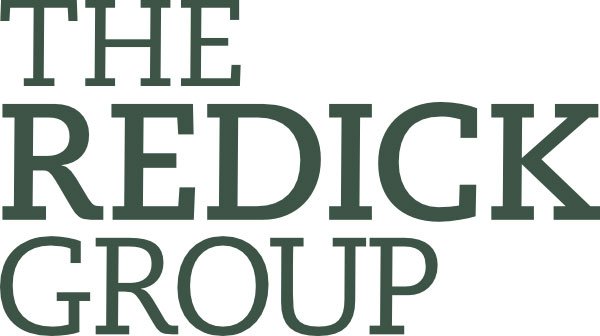Should Senior Leaders Upload Their Resume to LinkedIn? The Decision That Could Make or Break Your Executive Presence
The counterintuitive truth about LinkedIn résumé uploads that 87% of recruiters won't tell you—and why your C-suite positioning depends on getting this right.
TLDR: Uploading your executive résumé to LinkedIn may seem efficient, but for senior leaders it often signals job-seeking rather than strategic visibility. Instead of posting your résumé publicly, refine your profile to highlight leadership impact, thought leadership, and strategic outcomes. LinkedIn should reflect how you think—not what you’re applying for.
The Counterintuitive Truth About LinkedIn Résumé Uploads
When LinkedIn introduced its résumé upload feature, it seemed like a game-changer—especially for busy executives. Why not simplify your professional presentation for the 95% of recruiters who use LinkedIn daily?
Yet here’s the surprise that stops most experienced leaders in their tracks: uploading your résumé publicly may actually undermine your executive presence. It can signal misunderstanding of how senior platforms function, and position you as a candidate rather than a thought leader.
Executives who understand that perception drives opportunity know this isn’t a throwaway feature choice—it’s a strategic decision affecting how board members, C-level recruiters, and investors perceive your professional judgment.
Are Your Employees Accidentally Giving Away Trade Secrets?
Why Public Résumés Diminish Executive Presence
The challenge isn’t whether LinkedIn has value. It does. Research shows that executives who maintain active LinkedIn profiles strengthen both their companies and their personal brand, with 82% of professionals saying they trust firms whose leaders are active on social media.
The real question is how to leverage LinkedIn without eroding leadership authority.
Most advice treats LinkedIn as a job board. But for executives, it’s a platform for influence, reputation, and peer visibility—a digital boardroom. Uploading your résumé publicly turns that boardroom into a bulletin board.
Your profile should read like an executive bio in a board presentation: strategic, multidimensional, and audience-aware. A résumé, by contrast, is a transaction-oriented marketing document for specific opportunities. Often confidential ones. Conflating these functions confuses stakeholders and signals a lack of discretion.
The Silent Risk in Digital Executive Profiles
Senior leaders operate within ecosystems where data privacy isn’t just personal. It’s competitive. A public résumé can inadvertently expose your organization’s internal structure, project priorities, or strategic direction.
This risk isn’t theoretical. Recent breaches—such as LinkedIn’s 2021 exposure of over 700 million user records—show the importance of privacy control. In regulated or confidential environments, information asymmetry is strategic capital; avoid giving competitors free insight into how you think, who you lead, and what you plan.
When a Résumé Upload Helps (and When It Hurts)
The decision isn’t binary. Some scenarios justify limited résumé visibility—if managed carefully.
Consider these examples:
During Active Executive Searches: When signaling openness for board or C-suite roles, upload a strategically edited résumé—focused on value metrics and high-level impact, not internal operations.
For Portfolio Leaders and Consultants: Executives building advisory practices or board portfolios can use résumé-level detail as a credibility tool. Keep descriptions broad and business-oriented.
For Speaker and Thought Leader Engagement: Media contacts and event organizers may need rapid access to credentials; a streamlined public résumé can support that visibility.
Regardless of context, ensure that any document uploaded is non-confidential and designed for public consumption.
Executive Insight
Recruiters rarely download résumés. They scan profile content—your keywords, tone, and industry engagement—for relevance and influence. Treat LinkedIn like investor communication: precise, high-level, and brand-aligned. Every word contributes to your positioning narrative.
Making LinkedIn’s Application Features Work Strategically
LinkedIn’s Easy Apply feature requires different judgment. It’s designed for convenience, not discretion. While volume is high, executive-level response rates remain low.
Used strategically—with personalized outreach to decision-makers—it can function as a first handshake, not a one-click application. Senior leaders can leverage Easy Apply to create momentum, then follow up through direct engagement, network introductions, or industry commentary that demonstrates thought leadership.
Understanding Recruiter Behavior
The biggest misconception? Recruiters don’t search for uploaded résumés—they search keywords, company associations, and network relationships.
Executive search firms rely on intelligence, referrals, and targeted reputation analysis. When they use LinkedIn, they’re scanning your profile for credibility and influence—not a downloadable document.
That means optimization matters far more than attachment. Invest time in crafting a search-optimized, strategically positioned LinkedIn profile that showcases transformational results and executive thinking.
Building Your Executive LinkedIn Strategy
Treat LinkedIn as a leadership communications platform—not a job board. Your goal: enable discovery, establish credibility, and generate business relationships.
Profile Optimization Over Résumé Uploads — Tell your leadership story without exposing confidential details. Highlight transformation over tasks.
Keyword Strategy for Executive Search — Use strategic terms like organizational transformation, stakeholder engagement, digital acceleration, and corporate governance. These are what recruiters search.
Network Activation — Engage meaningfully. Share insights, post thoughtful commentary, and connect with peers, board directors, and advisors. You’re reinforcing visibility through industry impact, not applications.
The Executive Application Decision Matrix
Before clicking apply, consider:
Opportunity Type: Posted role or confidential search? Most C-suite roles originate through networks, not Easy Apply.
Relationship Leverage: Can you contact decision-makers directly? If yes, use LinkedIn for outreach instead.
Strategic Fit: Will public submission enhance or dilute your positioning? Tailored materials often speak louder than standardized uploads.
Timeline Impact: LinkedIn can be a tactical first step—but it should feed into relationship-driven engagement.
The Future of Executive LinkedIn Strategy
LinkedIn is evolving into a relationship-based platform, not a job portal. Executives who thrive treat it as infrastructure for influence—sharing insights consistently, engaging peers, and contributing to industry discourse.
Mastering this shift means measuring success by business outcomes and reputation growth, not profile views or application counts.
Your ultimate strategy: skip the public résumé, build a deeply optimized leadership profile, and use application tools sparingly—as part of an integrated outreach plan. The discipline will elevate your executive brand and attract opportunities organically.
About Jared
Jared Redick is a San Francisco-based brand development consultant, executive coach, and communications strategist with more than 25 years of experience helping companies and people position themselves for growth and change. Get career coaching here, or co-develop your professional identity here.
CITATIONS:
41 Essential LinkedIn Statistics You Need to Know in 2025" — thesocialshepherd.com
"How Can C-Level Executives Use LinkedIn Effectively?" — digitaldefynd.com
"Optimizing LinkedIn for Executives: A Professional and Engaging Guide" — combinegr.com
"The corporate security risks of being on LinkedIn" — reputationdefender.com
"LinkedIn Under Fire for Sharing Private Messages to Train AI" — sites.suffolk.edu
"How to Upload a Resume to LinkedIn" — resumeworded.com
"Everything You Need To Know About LinkedIn Easy Apply" — jobscan.co
"Why Easy Apply Is Sabotaging Your Job Search" — linkedin.com
"Should you post your resume on LinkedIn?" — linkedin.com
"How to Recruit on LinkedIn - 10 Free Strategies for 2025" — recruiterflow.com
"Best Practices for Executive LinkedIn Profiles" — navigateforward.com
"LinkedIn InMail Outreach: See Who Received More Attention ..." — linkedin.com
"Experts Debate LinkedIn Profile vs. the Executive Resume" — executivecareerbrand.com
"Should You Apply Through LinkedIn Or The Company's Website?" — ivyexec.com


